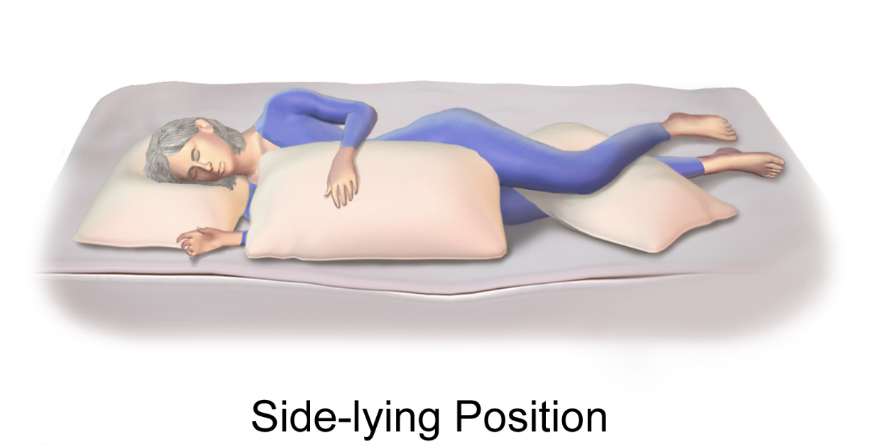

As you might already know, your sleeping position also impacts the quality of sleep that you receive. There are many different research and expert suggestions regarding the best sleeping positions. However, not all positions will suit you. Similarly, if you have sleep apnea, you can either fix it or mess it up with your sleeping position. In fact, a few positions might trigger temporary sleep apnea and compromise your sleep quality.
So, let's take a good look at the connection between sleep position and sleep apnea and how you can make the most out of it.
Sleep Apnea is a type of sleeping disorder where your body fails to breathe properly while sleeping. It is also known as a breathing disorder, but as it is associated with sleep, it is better to call it one of the sleep disorders.
There are two types of sleep apneas, primarily - Obstructive sleep apnea (OSA) and Central Sleep Apnea (CSA). There's a third type, a mix of the two, known as complex sleep apnea or treatment-emergent sleep apnea. But that doesn't work with the sleeping position.
OSA is caused when something obstructs the airway. It could be throat muscle, narrow windpipe, temporary blockage, body fat, or obesity in general.
CSA is when the brain itself fails to send signals to the respiratory organs and muscles to function properly. Thus, leading to sleep apnea issues.
Sleep apnea causes different types of problems (both CSA and OSA). Firstly, your body isn't able to breathe properly while sleeping, so you might get disrupted. You won't have a good night's sleep even when you think that you slept well.
Headaches, high blood pressure, fatty liver, lack of blood oxygen levels, and even heart conditions are often associated with severe sleep apnea. Therefore, it is essential to treat sleep apnea.
For sleep apnea treatment, a specialist suggests a weight loss program and lifestyle changes and might even offer CPAP therapy. Often, a sleep apnea diagnosis is required to determine the severity of the disorder. An overnight sleep study might also be included by the specialist.
Continuous positive airway pressure therapy is quite common to fix sleep disorders related to breathing. However, using proper sleeping positions with a CPAP machine, or for sleep apnea treatment can also work wonders.
If you're suffering from obstructive sleep apnea, or use a CPAP machine, then using a sleeping position can make a significant impact. It can affect the alignment of your jaws, throat, and upper airway to provide proper flow. Finding the right position for sleep apnea can indeed help solve a lot of issues. Let's have a look:
It is also known as the back sleeping position. This position is the worst sleeping position you can have, especially for people with OSA or obesity. While you're sleeping on your back, your tongue can easily roll into your throat and block the airway. Mucus from your nose and saliva from the mouth could also cause blockage or obstruction. Thus, you end up with apneas and hypopneas.
Many people are often tempted to sleep on their stomachs. Stomach sleeping is many people's favorite sleeping position, but it can lead to many issues. Firstly, it puts a strain on your breathing muscles, stomach, and the lungs. Next, you will most likely have your face sideways, and it could also block your neck.
People often complain about neck pain and other issues. It is one of the worst positions and even if you don't have a sleep disorder, you can easily develop one.
Now sleeping on your stomach or back is not an option. Then what is the best sleep posture? Apparently, it is a side-sleeping position. You can call it left-side sleeping or right-side sleeping, as you deem fit. It is one of the best sleeping positions for many reasons.
The tongue and your palate is less likely to obstruct the airway. You won't have pressure on your neck, stomach, chest, and other areas. If you have obstructive sleep apnea symptoms only for specific sleep positions, then this one works great for you.
If you're using CPAP machines, then the best position is definitely the side sleeping position for many reasons:
It helps with airway alignment and reduces obstructions.
You will have great comfort with the face mask and CPAP treatment without interruption to sleep.
It is easier to place your CPAP machine on the side and not worry about the face mask coming off.
If you have positional OSA, then it is definitely one of the best positions to reduce pressure from your airways.
Side sleeping is often linked with better digestion, as well. It reduces acid reflux and keeps your airway open/
As a bonus, if you have a soft pillow or a thin pillow, you can easily place it between your legs to help with your body posture, as well, regardless of PAP therapy.
If you have a problem with changing your sleep position, you can undergo sleep therapy. It will help you adapt to side sleeping and other positions for sleep apnea that will make a significant and positive impact on your sleep quality. Often, it might even require you to use a very thin pillow around your body to make it more comfortable.
Stomach sleepers should definitely use the therapy to reduce snoring and improve blood flow. If you're not comfortable with thin pillows, you can get thicker pillows.
Unfortunately, sleeping positions for sleep apnea primarily work for Obstructive Sleep apnea symptoms, also known as OSA. But for CSA, it is more related to the brain and the impact on breathing muscles. Often, changing positions for CSA doesn't work, but if you're using a CPAP machine, then it is still a worthwhile practice.
Leave a comment